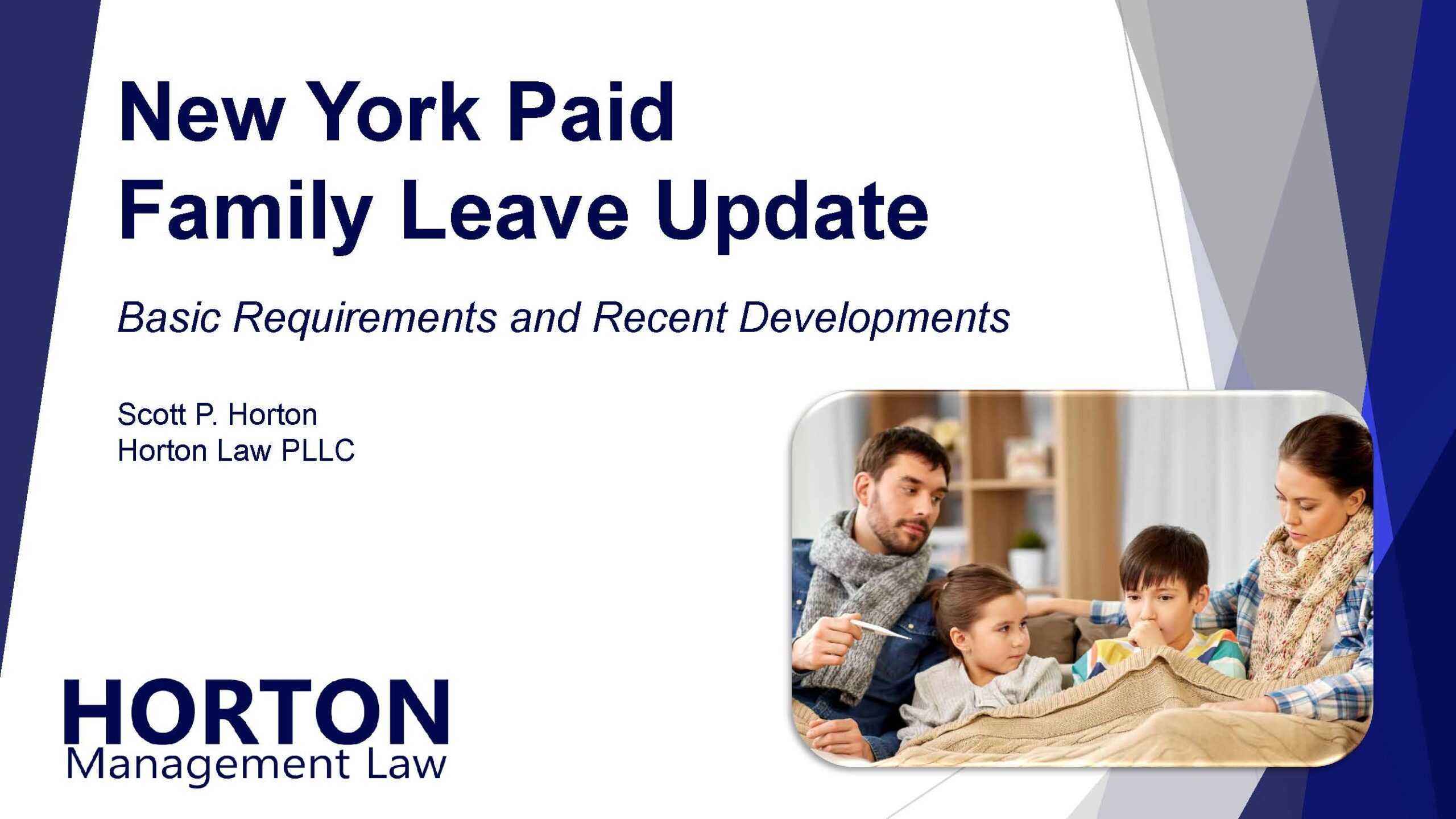On January 26, 2023, I presented a complimentary webinar entitled “2023 New York Paid Family Leave Update”. For those who couldn’t attend the live webinar, I’m happy to make it available for you to watch at your convenience.
In the webinar, I discuss:
- Employer & Employee Coverage
- Contributions & Benefit Rates
- Qualifying Circumstances
- Program Updates & Amendments
- Interaction with Other Leaves
and much more!
The New York Paid Family Leave Program took effect January 1, 2018. Five years later, PFL continues to evolve each year, For example, employee contributions and benefit rates change annually. There have also been statutory amendments to the law since it launched. This webinar recaps the fundamental aspects of PFL, identifies the key updates, and discusses compliance issues and strategies.
Why You Should Watch “2023 New York Paid Family Leave Update”
Virtually all private employers with at least one employee in New York State must be familiar with New York’s Paid Family Leave Program. Especially post-pandemic, this includes out-of-state employers with employees working remotely in the State of New York.
From describing the necessary insurance coverage and related administrative issues to contemplating the interaction between PFL, the FMLA, and other forms of employee leave, this webinar provides a broad overview of the New York Paid Family Leave program in 2023.
Whether you don’t know whether your company has all its bases covered or are looking for nuanced guidance on applying PFL in your workplace, this webinar will help further orient you. Materials include statistical charts on how the costs and benefits of PFL have changed over the past five years and other information that will help you answer questions from other members of management and employees alike.
Don’t Miss Our Future Webinars!
Click here to sign up for the Horton Law email newsletter to be among the first to know when registration is open for upcoming programs! And follow us on LinkedIn for even more frequent updates on important employment law issues.


